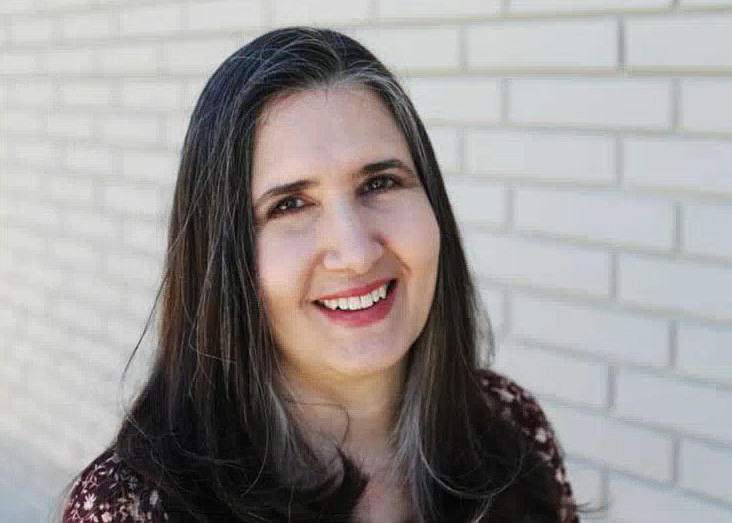Think it doesn’t matter? Chaos theory says it can
Thursday’s column explored the ancient African concept of ubuntu — the idea we are all somehow connected, so that compassion for another person is, at heart, an extension of compassion for oneself. If one person suffers, one way or another, so do we all.
“I am because you are.”
Aside from ubuntu’s spiritual aspects, is there a physical one? Is it true, scientifically, that all living things are connected?
No, and in a way, yes. But it’s chaos.
I asked physicist Brett Green, who grew up in North Idaho and earned his Ph.D. at Penn State, if there is evidence in physics that everything is somehow connected. With great patience for this highly interested but scientifically ill-qualified writer’s wee brain, his short answer was no.
“There is no invisible energy field — it’s not that each molecule is interacting with the rest,” Dr. Green told me. “It’s that molecules bounce into one another, so it’s through a chain of interactions that they affect one another.”
No invisible thread connecting all life, nothing in physics to support a kumbaya theory.
The good news is there is plenty of evidence in physics (and life) that what we do impacts others, setting off chain reactions of potential changes. In fact, Dr. Green explained how even the smallest acts or changes can lead to radical differences in the outcome in chaotic systems. With ping pong balls.
In mathematics, a system is “chaotic” if a small change in initial conditions leads to a completely different outcome.
“The central idea is that we know exactly the equations that tell us how things move and interact, so in principle we should be able to predict the future with them,” he explained.
“However, in reality, there are so many interacting pieces that, in some cases, the interactions are strong enough that slightly perturbing one object will change how it affects others, and then change how they affect others, and so on until the entire system looks completely different from the way it would have been had the first object never been perturbed.”
Like ping pong balls. They’re coming.
Real-life case in point: How Dan Green first encountered wife-to-be Linda (on a freeway) and how Dr. Green came to drive his friend to an important appointment before our interview.
“If he’d walked out without his keys that morning he’d never have seen her. If she hadn’t stopped for a bite to eat, they’d have missed each other,” said their son. “I wouldn’t be here. I couldn’t have met my friend at Penn State, couldn’t drive her, she wouldn’t be becoming an American citizen.”
This immigrant could join the ranks of others who’ve discovered life-saving cures and inventions. In the chaos of what we might see as happenstance lies a plethora of potential causes and effects.
In other words, it’s not pointless. Each act matters; a sandwich and a smile could lead to enduring love and a family which generates a county commissioner and a brilliant son (or two) interviewed for this little column. Who might inspire someone to study, become a scientist who takes us to the next transportation height, or solves a climate problem.
“All those interactions means that stuff gets complicated and little actions can have a domino effect, leading to unexpected things,” Green said.
Each choice matters. Each vote counts. Each kindness — and each harm — creates impact eventually, however small we perceive it to be. We may not see the final result amid the “chaos,” but it’s still there.
That’s the crux of chaos theory.
To explain chaos theory, Dr. Green said to picture a bunch of ping pong balls in motion.
“If one was red and you could follow its motion, its dynamics would be chaotic. Small changes where it starts can completely change its path and where it ends up a minute later. But if all the balls are one color and you zoom out, looking at the entire table of bouncing white balls, it looks the same (even if one changed position or direction).
“Air is a bunch of molecules in motion in the space between solid objects. They bounce off things and change their paths. If I could track one molecule, it would have a chaotic path — if I disturb it a small amount it could change its destination drastically,” he explained.
“But in terms of the larger picture, such as air temperature or wind speed, it’s going to appear the same, because the chaotic behavior is averaged out.”
Studying the small changes that can lead to vastly different outcomes is a field of mathematics called chaos theory. Add to this the butterfly effect — the way a small change gets bigger over time — and we see even larger changes. Just two degrees difference in temperature can mean a hurricane forms over the ocean, or it snows in Hayden but not Spokane.
“We all have impacted others and rarely know when or how much, but I’m thankful I heard back one time. I once gave encouragement to a local student — a simple conversation to me I soon forgot. A few years later his father said that conversation may have changed the student's life for the better. He'd gone from struggling in school to pursuing dreams internationally at 19.”
That ping pong ball might have ended up somewhere very different without a small act of kindness. Chaos theory at work.
“The more you zoom out the more likely you are to see some sort of correlation between changes and effect. As a scientist I can certainly believe that.”
Even amid chaos, we can create purpose.
• • •
Sholeh Patrick is a columnist for the Hagadone News Network who wasn’t smart enough to become an astrophysicist. Email sholeh@cdapress.com.

